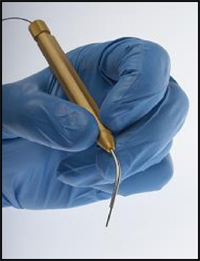Technology based on fundamental studies carried out within our MRSEC is
now saving lives at hospitals across the country: over 175 novel
endoscopic surgical procedures per week are being carried out across
250 medical facilities in the U. S. using high-power laser radiation
delivered by OmniGuide photonic fibers.
1. Fundamental Science: MIT MRSEC Seed funding supports discovery of the principle of omnidirectional reflectivity: simple multilayer dielectric film structures can be designed to exhibit perfect reflectivity for any incident angle and polarization of light.
2. Materials Development: Professors Fink, Joannopoulos and Thomas start OmniGuide, Inc. in 2000; Researchers in Microphotonics IRG develop a paradigm-breaking class of multi-material photonic band gap fibers: hollow optical/electronic fibers for CO2 laser transmission.
3. Technological Impact: Microphotonics IRG research reveals wide range of applications for hollow fibers, including high power laser transport for noninvasive surgery.
4. Life-saving Tools: OmniGuide develops tool for invasive surgery. December 2008: surgeon uses the OmniGuide BeamPath CO2 Laser-Fiber System to remove a previously inoperable brain tumor and save the life of a 19 year old patient. Story profiled by Dr. Sanjay Gupta on CNN's "Vital Signs" on Jan. 29, 2009. 